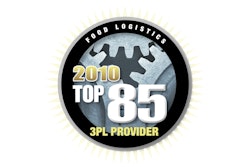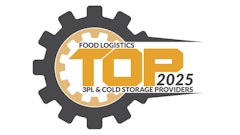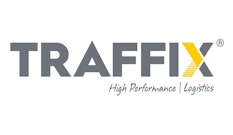
In a perfect world, products would ship out in full truckloads (without being held to max out a trailer), would travel directly to their final destinations (with no intermediate stops or cross-docking) and would arrive damage-free precisely at the requested arrival date (RAD).
Food manufacturers would ship to the DCs of their retailer customers more frequently in smaller quantities and with a high degree of certainty that products will arrive within the RAD. They would cut costs by reducing their inventories. Furthermore, this process—offering end-to-end supply-chain visibility—would cost less and would improve customer service for all participants along the supply chain.
Although this might sound like a supply chain manager’s dream, today’s 3PLs are helping their clients make this dream come true. But the model requires some supply chain changes in habit and practice among food manufacturers and retailers.
Collaboration Is The Key
With their vast and efficiently operated transportation and logistics infrastructures, 3PLs offer the mechanism by which manufacturers and their retailer customers can increase service levels cost-effectively. To state a very complex process in its simplest form, 3PLs consolidate products from multiple manufacturers in their warehouses to create full truckloads of shipments to multiple retailers. The two terms used interchangeably to define this process are collaborative distribution and multi-vendor consolidation. “In order to achieve what we refer to as multi-vendor consolidation, there must be collaboration among manufacturers, retailers, and logistics providers,” says Dan Sanker, president and CEO of CaseStack in Fayetteville, AR.
Kane is Able calls the process collaborative distribution, notes Chris Kane, chief customer strategy officer for the Scranton, PA company. “Collaboration makes this process successful. In our program, we engage all parties in the supply chain—from the manufacturers to the retailers. We even reach out to the retailers’ buying and merchandising groups to educate them about the importance of getting their orders collaborated on a single day. So instead of having their mustard orders coming on Monday, ketchup orders coming in on Tuesday and mayonnaise orders on Wednesday, we try to get everyone within an organization to order together so all of these products can ship out together on one truck. This means savings and efficiencies for them from a receiving and order management perspective.”
Kane adds that his company does not ask customers to extend the RAD. “We just emphasize how important it is to achieve savings by collaborating orders on the same day. If 10 of our manufacturer clients say they want a weekly replenishment to a major retailer, we ask that they pick one day for delivery—then everyone achieves cost benefits and service levels rise substantially.”
This collaboration concept is not new, explains Sanker. “It goes way back, but it wasn’t that successful in previous incarnations. There were many people working hard to communicate and collaborate across company lines, but there wasn’t the technology available that we have today to keep the network from falling apart.”
In its present form, collaborative distribution has been around since about 2000, when technology and the Internet helped facilitate collaboration and communication among all supply chain participants. “It’s really the available visibility and recording tools that help promote and sustain collaboration,” continues Sanker. For instance, he adds that some of CaseStack’s larger customers use the technology forecasting tools to help them determine how much product they need to manufacture down the road based on sales history.
That Was Then
The old way involves retailers sending electronic orders to manufacturers. The manufacturer then contracts with an LTL carrier to pick up the order and deliver it to the retailer’s DC—in many cases resulting in a convoluted and longer transit time.
“The carrier would drive to the food manufacturer’s DC, pick up two pallets, take them back to the carrier’s break-bulk facility where the shipment is offloaded,” explains CaseStack’s Sanker. “Then the products are sorted through and placed on pallets that go out the next day to some other break-bulk facility near the final destination. Then the carrier has to call to make an appointment to deliver to the retailer’s DC. It’s a very convoluted process with a lot of activity involving taking products off trucks and putting them back onto other trucks.
“There is a lot of damage involved in these activities and it means that there could be 50 percent more miles driven to and from the break-bulk facilities.”
Collaborative distribution evolved from the old pool concept, notes Dan Quinn, vice president of warehousing for Milwaukee-based Midwest Refrigerated Services.
“Within the pool concept, products would not be shipped until a shipper collected enough orders to ship a full truckload. But when you are delivering to major retailers and club stores, you really need to be going into their DCs on a scheduled basis,” says Quinn. “If you have to go in on your own, you might be in a smaller weight bracket and you might have to pay a stop charge. You might have a lot of other problems as well because that carrier is only going into that large DC with just one stop and he may lack standing appointments.”
On-time delivery rates using LTL range from 68 percent to 85 percent, reports Sanker. “These are not acceptable rates, especially when we see many retailers charging compliance penalties to cover their extra costs if your products arrive earlier or later than they should.”
This Is Now
Third-party logistics executives admit that the concept of multi-vendor consolidation or collaborative distribution initially might cause some pushback among food manufacturers, who might not want their products riding on the same truck as their competitors’ products.
“But they embrace the idea once they understand the efficiencies,” says Quinn. “Keeping costs down is a big benefit and I think they are differentiating themselves on something other than just service to the destination.”
Kane offers this analogy: “When you take an airport shuttle to a convention, you and your business competitors can all ride together on the shuttle for $10 each—or you can each take a cab at $50 a ride.”
Supply chain collaborators: The real key to successful collaboration rests in how the 3PL handles the process, says Kane. “We are the supply-chain collaborator in that we collect information from the manufacturers relative to their inventory levels, product availability, production schedules and forecasting. We also collect information from their retailer customers relative to their RADs and any other requirements they specify. We synthesize that information and execute to meet the guidelines of both the manufacturers and their retailer customers.
“The visibility we provide gives our customers a high comfort level because they can see their pending orders being collaborated. This is far different from the old model that held their products until there was a full truckload.”
Food manufacturers are continually challenged to remove inventory from their networks, Kane reports. “Cost of capital is a big consideration today. What we offer in collaborative distribution is rather than manufacturers having multiple inventories in multiple facilities, our program houses various inventories under one roof from which we can serve super-regional facilities within a 500-mile area.”
He offers an example of a food manufacturer with six different locations in the Northeast. “They had been keeping duplicate inventories in these various locations, but they often didn’t have the right inventory at the right location. So we consolidated their inventory under one roof.”
The benefit for the retailer is it can go to the warehouse with its own vehicles to take advantage of backhaul opportunities, offering further cost savings. Backhaul rebates from 3PLs can be as high as $750 per truckload, Kane says. For instance, one retailer picks up product from Kane is Able’s collaborative center on weekends because that is when the retailer delivers to its stores. “Most of their vendors are closed on the weekend, so they would have to return empty if they couldn’t pick up a week’s worth of orders at our collaborative center.”
Kane notes that a critical factor to success relies on convincing retailers that they won’t experience stock-outs. “In reality, weekly deliveries consolidated intelligently could fill the vast majority of the replenishing requirements for a typical retailer. Urgent deliveries, say in response to a sudden uptick in demand for a particular product, could be made via LTL. Visibility through the use of cargo tracking tools could offer retailers a comfort level that they have the right goods in the delivery pipeline at the right time.” The additional benefit of consolidated deliveries is that they make life on the receiving dock a lot less hectic. “The guys on the dock would much rather get one intelligently packed delivery a week than several scattered ones.”
EasyPass: Point A to point B: At Dallas-based Shippers Warehouse Inc., its multi-vendor consolidation subsidiary—Grocery Direct Consolidated Transportation (GDCT)—is a large and popular option for its CPG customers, says Ken Johnson, president and CEO. Of its 300 grocery retail CPG customers, over half of them use GDCT.
“We ship anywhere from 50 to 75 full truckloads a day of consolidated LTL shipments. GDCT handles about a half-billion pounds of refrigerated and ambient-temperature CPG shipments annually, serving primarily the Southeast, Southwest, and Midwest regions,” says Johnson. “Not only do our customers get the drastically reduced freight rates, but they get fewer damaged products as well because the freight is touched only one time. Shipments are loaded onto our trucks and are not handled again until they are unloaded at the consignee’s dock. Products simply go from point A to point B without ever crossing another freight dock in between—so shipments get to their destinations a lot quicker and with virtually no damages.”
Using GDCT, Shippers Warehouse consolidates loads utilizing the volumes from among all of its facilities. “The building that has the largest portion of freight to ship on one trailer is the building from which the full truckload will ship,” explains Johnson. Company trucks pick up orders from the company’s other facilities that need to deliver to that building for consolidation and final shipment.
Johnson cautions that some competitors, while touting consolidation and collaborative services, simply go to the LTL market with their huge volumes of freight and negotiate volume discounts with large LTL carriers. “These carriers pick up the freight and the warehouse bills their customers accordingly,” he says. “But in this model, shipments don’t end up on a truck going to the final destination. Instead, the truck heads back to a freight terminal, where shipments are cross-docked and consolidated further before they continue to the final destination. In some cases, they are cross-docked more than once.”
Single-retailer consolidated deliveries: Atlanta-based AmeriCold Logistics offers two consolidation programs, each of which delivers on a fixed schedule once or twice a week, depending on the destination. The traditional program consolidates products from multiple manufacturers and delivers to multiple retailers. Consolidation programs in the temperature-controlled niche are especially beneficial to food manufacturers who ship less-than-truckload shipments to customers.
“If you are delivering to large retailers like Publix or Wal-Mart, you will need some assistance to achieve density, and LTL programs can help you ride with other manufacturers in a multi-manufacturer to multi-retailer environment,” says Greg Bryan, executive vice president of transportation.
A second retailer-driven program consolidates products from multiple manufacturers going to one major food retailer, continues Bryan. “The trend in the industry shows that retailers are becoming much more engaged in this consolidation process,” he says. “They now want to work with us to be able to customize their deliveries so they can order from manufacturers at the layer level rather than at the pallet level. This helps them minimize inventory deliveries while receiving exactly the products they need on a week-in and week-out basis.” In either program, transportation savings can be 8 percent to 10 percent and inventory levels can be reduced by 10 percent to 30 percent, depending on the manufacturer.
This single-retailer model reduces inventory in the system and cuts cycle times from order to delivery, Bryan explains. “It also minimizes congestion on the receiver’s dock so instead of five different trucks arriving, they just get one in which there might be product from 20 different food manufacturers. So by building trucks to their specific delivery and inventory requirements, by maximizing cube, and by reducing the transportation cost, the unit costs are a lot less. Although the focus is on the unique needs of the retailer, we still have strong relationships with the manufacturers involved.”
Operating with certainty: Shippers are a lot savvier today. “There are numerous things they are demanding today that 10 years ago they weren’t,” reports Quinn. “For instance, they want to know that their brand is being put on quality equipment and that their products are being handled with integrity and security throughout the supply chain. They want more owner-operators, contracted, or co-owned assets in place rather than the old brokerage concept. They want to know that their orders will move on a predictable schedule to meet certain timeline benchmarks.”
If 3PLs are not offering these services, they will find themselves sitting on the sidelines, adds Quinn. “It is a powerful achievement for us to be able to say that we can tell you the day and sometimes within the hours that we will be at a particular location. We have approximately 125 truckloads a week sailing into all 48 states on a scheduled basis, so retailers or foodservice distributors trying to manage inventory investment and increase inventory turnover have a high degree of certainty that they will receive the goods they need when they need them.”
Customers want to experience the perfect order concept, Quinn explains. “Anyone trying to sell goods to a foodservice distributor, a club store or a retail grocer will tell you that you absolutely must deliver flawless execution for delivery times, for correctness of the order and for the appearance and temperature of the goods. All the information on the documentation must be correct. They don’t want anything that obstructs the flow of their goods to their customers. So to grow your business, you must achieve perfect execution.”
Big gains for smaller companies: Let’s face it, as a smaller food manufacturer or retailer, you want to be able to compete with larger truckload competitors on the shelf and you want that playing-ground environment to be as level as possible.
“Some of our customers target retailers who cannot buy truckload quantities of merchandise,” notes Kane. “So they are forced to ship in LTL quantities, which puts them at a cost disadvantage if they are not in a collaborative program. If these companies collaborate with other companies of their size, then deliveries to retailers result in a truckload delivery rather than an LTL delivery and they are no longer at a cost disadvantage. This is very significant to small- and medium-sized companies because food margins are razor-thin, meaning that supply-chain advantage or disadvantage significantly affects your bottom line.”
Some consolidation programs consider a truck to be full when it has sufficient weight and cube on it for shipments rated LTL to exceed the comparable truckload charge for the same destination, notes Johnson.
“But within GDCT, a full truck is one that has pallets filled all the way to the door. So if we have an order equal in size to those remaining pallet positions, we will include those extra pallets, thereby reducing the cost to our customers by achieving more trailer efficiency. This is an example of where a customer’s smaller shipment could achieve large savings,” says Johnson. “The smaller shipment will be rated based on truckload pricing—and not on LTL pricing—and the company with the larger order will not have to pay the full truckload rate. So it’s a win-win situation for everyone.”
He adds that customers can save about 25 percent over the LTL model. “This is very significant. Some customers tell us they save more in a month than the amount they pay for their warehouse storage bill.”
Improvements in cost and service: Providers of 3PL services report significantly higher service levels using the collaborated distribution or multi-vendor consolidation model, with industry on-time rates reporting 98 percent and higher, while the rate for LTL ranges from 68 percent to 85 percent.
“It’s about delivering the right product, on time, with no damages, and with transportation savings ranging from 20 percent to 40 percent, depending on the nature of your network,” reports Sanker. The company handles a few hundred million pounds of food products a year from facilities in six regions throughout the country.
Midwest Refrigerated Services operates four facilities in southern Wisconsin, serving food manufacturing customers in the upper Midwest region who flow product into these facilities. “On the outbound lane, we service clients in all 48 states,” reports Quinn. On the warehousing side of the business, annually Midwest handles about 1 billion pounds of frozen and refrigerated food products. On the freight side, it handles about one-half billion pounds of product.
Rethinking Old Habits
There is no doubt about it: collaboration and consolidation programs require a new mindset.
“Getting customers to the point of using these services is truly a journey in helping them recognize the advantages of changing their buying habits and their delivery methods,” notes Kane. “It requires compromise and some give-and-take from all supply chain participants.”
The new role for 3PLs, continues Kane, will be to act as warehousing and freight matchmakers. Retailers must think about how to consolidate all their orders intelligently, which requires that each department can no longer order separately. Furthermore, manufacturers have to rethink logistics operations, requiring their goods to be consolidated into full truckloads with other manufacturer’s goods going to the same final destinations. “Changing entrenched practices won’t be easy, but the rewards are substantial,” says Kane.
Fueling Food Transport—OUTSOURCING STRATEGIES
Food manufacturers practically invented supply chain fundamentals. As industry costs increased, profit margins tightened, and FDA regulations intensified, food executives assessed every part of the production and logistics process to streamline operations. Reengineering was the buzzword of the ’90s and as the first decade of the 21st century begins to wind down, the industry continues to search for ways to deliver products efficiently without sacrificing quality or profits.
Fleet managers for food manufacturers and foodservice distributors also continue to evaluate their departments' operating margins by taking a hard look at how they procure, manage and account for fuel. Though it is only one part of getting goods to market, a long-term fuel management strategy is an important consideration in an industry where every penny counts.
Fuel is a significant cost factor in food transportation and its price volatility has directly correlated to less predictable operating expenses and margins. Fleet managers charged with managing supply portfolios and maintaining adequate stock levels—often at multiple sites—should consider a centralized approach to their fuel management.
The fuel supply chain complexity combined with erratic price cycles caused by the market and weather issues causes concern for CFOs when attempting to minimize expenses. This is why many food manufacturers and food service distributors are outsourcing fuel management to:
- Centralize the fuel management process;
- Mitigate the impact of price volatility;
- Manage price predictability;
- Optimize the deployment of working capital; and
- Gain competitive advantage by better managing fuel price volatility and the timing of fuel purchases.
Utilizing outsourced solutions, fleet managers can access sophisticated data in order to better manage operational budgets and centralize control—yielding levels of visibility across the organization. Outsourcing can achieve an average savings of 4 to 6 cents per gallon and provide food manufacturers and distributors a viable long-term option that combines the knowledge of industry experts, best practices used by some of the world’s preeminent fleet companies and the strength of proven fuel management automation systems.
With additional levels of automation and rigor around forecasting, procurement, management and financial reconciliation, outsourcing fuel management also allows staff to focus on their core areas of expertise—logistics, customer service and operational excellence.
John Fershtand, director of fleet operations and energy management for Ben E. Keith Foods, Fort Worth, TX says, “We’re in the food business not the fuel business. By outsourcing our fuel management, we are able to focus on what we do best.”
The outsourcing process begins with an in-depth spend analysis that takes into account the entire fuel lifecycle. The analysis should take into account spending trends, supplier arrangements, market dynamics and other business processes to recommend opportunities for gaining efficiencies. This establishes a best practices baseline from which the program will be measured and compares current operations to industry standard pricing and performance. Having the right strategy and identifying goals for a fuel program is imperative to purchasing fuel at the best price.
Armed with the data from the spend analysis, the outsourced fuel management team assimilates the intelligence to pro-actively balance security of supply, desired cost and margins. Aggregating volumes and centralizing control creates forecasting, sourcing, inventory management and reconciliation synergies and strengthens negotiating power with suppliers.
With an effective outsourced arrangement, the impact of supply shortages can also be diminished to ensure the fleet has the fuel it needs at the right time at a competitive price.
Expert teams can provide a strategic procurement plan that will enable fleet managers to gain strategic consulting on supply portfolios and negotiate long-term supply contracts that are either fixed price or index-based utilizing industry information services like OPIS, Argus and Platts.
The use of index-based contracts, which float with the daily markets, helps ensure supply security and that you can lock in the ability to buy better than your competitors on a daily basis throughout the year. They can take advantage of their outsourced partners short-term tactical buying power and load shifting strategies that will significantly reduce yearly costs.
Once supply and transport options are vetted and inventories optimized, the final link in the supply chain is financial settlement. An outsourced fuel management solution can compare and verify accuracy of quoted price, bill of lading, invoices, delivered gallons and freight and taxes—all essential factors to increasing operational transparency and controlling fuel costs.
Automating financial reconciliation and ensuring tax compliance increases operational transparency and rapidly resolves billing and invoice discrepancies via financial matching. This means the fleet manager can control and manage fuel costs in a centralized, end-to-end manner from procurement to management and financial reconciliation.
Fleet managers choosing to outsource fuel management gain the operational predictability that comes with supply security and lower overall fuel costs.
Supported by a team of fuel experts, food manufacturers and food service distributors can now manage any level of fuel volumes in an economical and sophisticated way without the need for additional overhead costs.
By reducing financial exposure to volatile markets, fleet managers can create a competitive edge, secure in the knowledge they are obtaining the fuel required to power their fleets at the most optimized level and make a significant impact on the organization's overall supply chain strategy.
—Ryan Mossman is vice president and general manager of FuelQuest’s Fuel Services, Houston.
What You Don’t Know Will Hurt You
Why now is the right time to get serious about CSA 2010.
By Christian Schenk
CSA 2010 is many things. To the government, it’s a way of increasing safety. To most fleets, it’s an ever-changing regulation that’s hard to keep up with. To some, it’s a way to create a competitive advantage. And to shippers, it’s a driving force for revamping their carrier qualification process.
Whether they’re shipping across town or across the country, your customers are faced with reduced capacity, higher costs, increased regulation and greater uncertainty.
As a result, they’re looking to create more constructive and productive relationships with their carriers-relationships that can help them win in the marketplace.
Carriers that are well-positioned to help will reap a decided advantage, while those that aren’t will begin losing business.
The most obvious change shippers will make in the wake of CSA 2010 is to their carrier qualification processes, which will become more demanding and more data driven. That’s because the one thing shippers want more than anything else is visibility of a carrier’s data.
To ensure that visibility will enable greater control of their supply chains, many shippers are mandating electronic onboard recorders (EOBRs).
EOBRs which are both affordable and easy to install, gives shippers real-time visibility of every aspect of their drivers’ performance—from Hours of Service compliance to speed monitoring, from their carbon footprint to where and for how long they idle.
Just about all parents think their kids are above average. And just about all fleet managers think the same thing of their drivers and vehicles. This is known as the superiority bias, which causes us to overestimate our positive qualities and underestimate our negative ones.
In the past, fleets could sing their own praises, whether they were well-deserved or not. But thanks to CSA 2010, the government now has a way of measuring driver performance.
Here’s what they know about that performance: More than 4,000 fleets with 10 or more vehicles have unsatisfactory safety ratings. And many more are at the risk of failing.
To ensure that your fleet truly is better than average and capable of complying with the seven Behavior Analysis and Safety Improvement Categories of CSA 2010 (unsafe driving, fatigued driving, driver fitness, controlled substances/alcohol, vehicle maintenance and cargo-related violations, now is the time to install EOBRs.
All EOBRs help with compliance and can also help fleets improve. For instance, electronic driver logs are proven to shrink HOS violations, which is especially important because HOS violations accounted for 45 percent of all 2009 trucking industry citations. And because all information is collected and coded automatically, errors are reduced. Administrative costs are as well.
Choosing The Right EOBR
To ensure you choose the right EOBR for your fleet, follow this five-step process:
- Get smart. Learn as much as you can about your fleet—where it’s strong, as well as where it falls short. Also take the time to familiarize yourself with CSA 2010 and FMCSA 395.16 regulations.
- Set your key performance indicators (KPIs). Typically tied to your organization’s goals, KPIs are quantifiable measurements that clearly state what’s going to be measured and how. To be effective, KPIs must be:
- Relevant to your success. Many things can be measured, but not everything measurable drives your success. For instance, measuring the height of your drivers won’t help you reduce fuel costs, but knowing how long they idle their trucks will.
- Measurable. For a KPI to be of any value, you must be able to accurately define and measure it. “Be a better fleet” is useless as a KPI because there’s no way to measure what “better” is. Better HOS compliance? Fewer accidents? More satisfied customers? Yes, to all.
- Consistent. Once you put a KPI in place, you must stick with it over time. Doing so gives you benchmarks you can use to measure your ongoing progress.
- Develop an action plan. This is a simple step-by-step plan to take you from where you’re at today to where you want to be at a certain point in the future.
- Reap the low hanging fruit. With the right fleet management system, you’ll be amazed at how quickly you can improve, especially if you’ve chosen a system with robust out-of-the-box capabilities.
- Capitalize on your data. Reports that manually take up to 40 hours to create can be created in less than 30 minutes. And because you have ready access to so much more data, you can make better, faster decisions—decisions that can help you reduce costs and increase safety and compliance.
Schenk is vice president, product marketing, XATA Corp., Minneapolis.



















